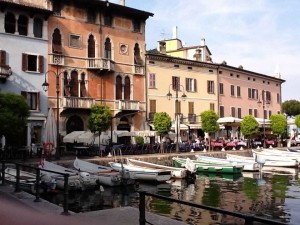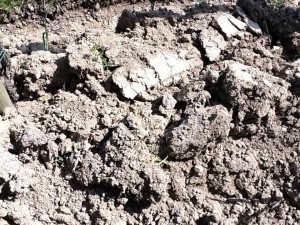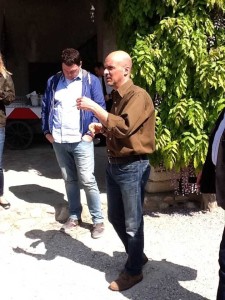Today we have a guest post authored by Susannah Gold, DipWSET, CSS, CSW. Susannah tells us about the “liquid gold” wines of the Lugana DOC!
Lugana is a name to know. A white wine from the Lake Garda region of Italy made with the Turbiana grape, Lugana is a wine that can be drunk both in the young, fresh style as well as with some age on it.
Lying on the border between the two provinces of Brescia and Verona, the Lugana denomination stretches along the plains of morainic origin to the south of Lake Garda, within the communes of Sirmione, Pozzolengo, Desenzano and Lonato (in Lombardy) and Peschiera del Garda in the Veneto. The denomination is in both Lombardy and the Veneto. One of the only inter-regional DOC wines, some 90% of the vineyard holdings are located in Lombardy.
The “Lugana” Controlled Denomination of Origin (DOC), was instituted in 1967 as the first to be awarded this status in Lombardy as well as one of the very first in Italy as a whole.
The Lugana denomination can essentially be divided up into two zones. The first—and larger—area is that with firmer clay soils. It is fairly flat and stretches along the hinterland of the lake, including Desenzano, Sirmione, part of the commune of Pozzolengo, and Peschiera. This is the heart of the denomination which produces the most “lacustrine” and mineral style of Lugana.
In the Veneto part of Lugana, there is just one commune, Peschiera del Garda. However, this includes one of the most interesting subzones, that of San Benedetto di Lugana, one of the denomination’s real “crus”.
The second, hillier zone stretches from the famous Monumental Tower of San Martino della Battaglia in two different directions: towards Pozzolengo and towards Lonato. Here the clays are sandier; the hills are more undulating and gentle, with altitudes of no more than 130 meters; the soils are more morainic (especially towards Lonato), with a considerable presence of gravel; the wines are less mineral-drivenl, more acidulous and voluminous.
In Lugana, the microclimate—influenced positively by the temperate breezes from Lake Garda—is mild and fairly constant, with little difference between day- and night-time temperatures. This is a “climatic cradle” that is perfect for highlighting the peculiarities of a special grape like Turbiana
Never heard of Turbiana? Not a surprise. It only grows in this area. Related to Trebbiano di Soave—a variety that is quite close geographically speaking, but whose vineyards lie on a different type of soil, of volcanic rather than morainic origin—the Turbiana grape was considered for a long time to be related to (if not actually confused with) the Verdicchio grape variety from Castelli di Jesi in the Marche Region. However, recent studies have shown that it is different from that cultivar in its aromatic characteristics, as well as from a phenological, agronomical, and oenological point of view.
Less high-yielding than most of the other Trebbianos of Italy, Turbiana is a grape that has a medium-sized, compact bunch, with a long, pyramidal shape; the pulp is juicy and loose, slightly acidulous, and neutral in flavor. It is sensitive to rot, oidium and peronospora. When vinified on its own, it shows great versatility both in the classic still versions and in sparkling ones.
Even if the production regulations allow for the presence of up to 10% of complementary white varieties (as long as they are non-aromatic), nowadays the zone’s producers tend to make their Luganas exclusively from Turbiana. Five different styles are permitted: standard Lugana, Superiore, Riserva, Vendemmia Tardiva (Late Harvest) and Spumante (Sparkling).
The Lugana production is limited, only about 16 million bottles per year. Much of it is exported to Germany and the U.K but a fair portion arrives in the U.S. as well. See if your local retailer carries some, you will be richly rewarded with this versatile and easy to pronounce wine.
Susannah Gold is the founder of Vigneto Communications, a New York City-based marketing and communications agency focusing on the food & wine industry.
Susannah is one of only a handful of non-Italians in the Associazione Italiana Sommeliers (AIS) and has received her Diploma of Wine & Spirits (DWS) from the Wine & Spirits Education Trust (WSET), a prestigious British program. She has also completed the Certified Specialist in Wine (CSW) and Certified Specialist of Spirits (CSS) exams at the Society of Wine Educators, a school in the United States and has completed her certification as a Spanish Wine Educator at the Wine Academy of Spain. Susannah is also a highly-rated, frequent speaker at SWE Conferences and we look forward to having her present a webinar on the wines of Lugana for SWE sometime very soon!



